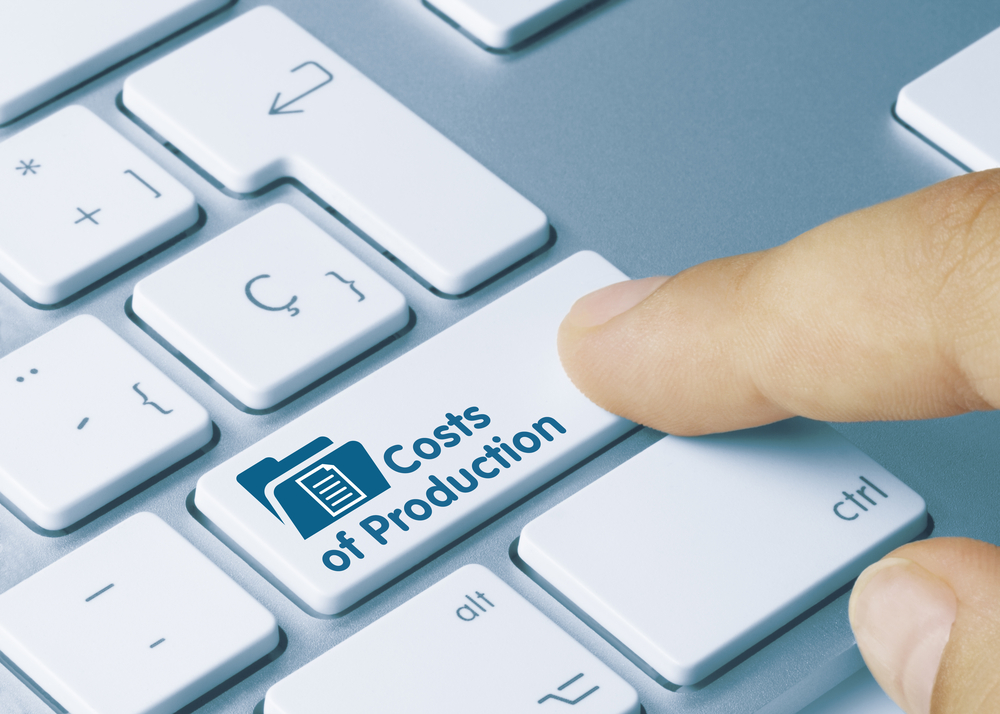Costs of Production
An Economics Topics Detail
By Arnold S. Kling
What Are the Costs of Production?
Costs of production affect the decision an individual firm makes about how much to produce. They also affect how many firms will be in an industry.
To illustrate the concepts of cost of production, consider a pizza shop that makes pizzas and delivers them to customers where they live.
–Fixed Costs are costs that the firm must incur even if it produces no output. The pizza shop must pay rent, it has to obtain ovens and other equipment, it must obtain a license, pay for advertising, etc.
–Variable Costs are costs that vary with the amount of output. Each pizza requires flour, tomato sauce, cheese, additional labor effort, etc. Since our shop delivers the pizza, variable cost includes the driver’s time and the cost of gasoline.
–Marginal Cost is the cost of increasing output by one unit. To increase sales, our pizza shop must deliver pizzas to customers farther and farther away from our location. This costs more in gas mileage and driver’s time. So we say that there are increasing marginal costs.
When we decide how much to expand production, we compare the price we can sell output to our marginal cost.
Suppose that the price we can get for a pizza is $10. If the marginal cost of producing a pizza and delivering it to nearby customers is $8, we earn a profit on an additional pizza and we should expand output. As we try to serve a larger market with customers farther away, the marginal cost might rise to $11. That is too high relative to a price of $10, so we should not expand output that far. We should only expand output to where the point where the marginal cost of making and delivering the pizza is just equal to the price.
–Average Variable Cost is the sum of all variable costs divided by the number of units sold. If the total cost of pizza ingredients, gasoline, and labor time for delivering 10,000 pizzas is $80,000, then average variable cost is $80,000/10,000 = $8. As long as the price at which we can sell a pizza is above average variable cost, it pays to keep continue operations. But if the price were below average variable cost, then we should stop buying ingredients and paying for labor. We would still be stuck with fixed costs, until we can exit the business.
–Average Total Cost is the sum of all variable costs plus fixed costs, divided by the number of units sold. If the total variable cost for delivering 10,000 pizzas is $80,000 and the fixed cost of our shop is $20,000, then total cost is $100,000. So average total cost is $100,000/10,000 = $10. If the price we can sell pizzas is $10 each, then we are just breaking even. If the price is $9, then we should keep selling pizzas to cover variable cost, but we should be trying to exit the business by selling the equipment and getting out of our rental agreement as soon as possible.
To decide whether to enter an industry or exit an industry, an entrepreneur will assess the prospects for selling output above average total cost. Once in an industry, the entrepreneur will keep producing output as long as the price is above average variable cost, but if the price is below average total cost the entrepreneur will look to exit the industry.
The decision of how much to produce is based on comparing marginal cost to marginal revenue. When marginal revenue is above marginal cost, that suggests producing more. When marginal revenue is below marginal cost, that suggests producing less. When marginal revenue and marginal cost are equal, that suggests that the right amount is being produced.
When the firm is making these marginal decisions, fixed costs do not matter. But for the industry as a whole, fixed costs affect the number of firms that a market can support. Other things equal, when fixed costs are high, there will be only a few firms. When fixed costs are low, there will tend to be many firms. When the Internet reduced the fixed cost of becoming a publisher, because you no longer need a printing press, the number of providers of written content skyrocketed.
Related Topics
Aggregate Supply. College Economics Topics.

